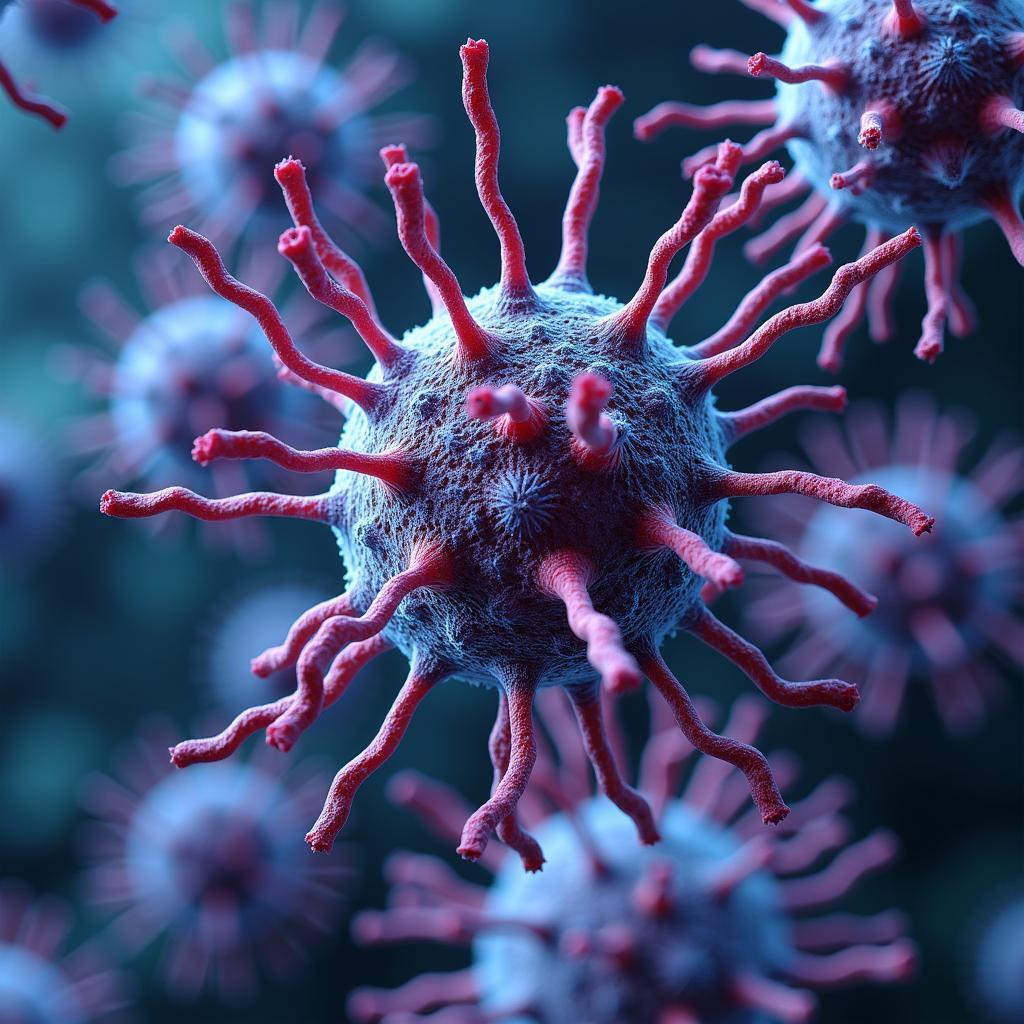African Green Monkey & Ebola: Unraveling the Connection
African Green Monkey Ebola has captured public attention, sparking curiosity and concern. This article delves into the relationship between these monkeys and the Ebola virus, exploring its origins, transmission, and impact on both primate and human populations. We will examine scientific findings, address common misconceptions, and highlight the importance of conservation efforts.
The African Green Monkey: Habitat and Lifestyle
African green monkeys ( Chlorocebus sabaeus) are highly adaptable primates found across West Africa.  African Green Monkey in its Natural Habitat They thrive in various environments, from coastal regions to savannas and forests. Their diet consists primarily of fruits, leaves, and insects, and they play a crucial role in seed dispersal and forest regeneration. These social animals live in complex groups with intricate hierarchies and communication patterns.
African Green Monkey in its Natural Habitat They thrive in various environments, from coastal regions to savannas and forests. Their diet consists primarily of fruits, leaves, and insects, and they play a crucial role in seed dispersal and forest regeneration. These social animals live in complex groups with intricate hierarchies and communication patterns.
Ebola Virus and its Connection to African Green Monkeys
While African green monkeys can carry antibodies to the Ebola virus, indicating prior exposure, they are not considered primary reservoirs. This means they can become infected but do not readily transmit the virus to other species, including humans.  Ebola Virus Structure: A Microscopic View Research suggests that fruit bats are the most likely natural reservoir of the Ebola virus. The virus can then spill over to other animals, such as primates, through contact with infected bat droppings, fruit, or other bodily fluids.
Ebola Virus Structure: A Microscopic View Research suggests that fruit bats are the most likely natural reservoir of the Ebola virus. The virus can then spill over to other animals, such as primates, through contact with infected bat droppings, fruit, or other bodily fluids.
How is Ebola Transmitted?
Ebola transmission occurs through direct contact with infected bodily fluids, such as blood, saliva, vomit, and feces. african bush meat can be a source of infection if the animal was infected with Ebola. This highlights the importance of safe handling and thorough cooking of meat. Human-to-human transmission can also occur through contact with contaminated surfaces or objects.
Debunking Myths about African Green Monkeys and Ebola
One common misconception is that African green monkeys are the primary source of Ebola outbreaks. However, scientific evidence points towards bats as the natural reservoir. While monkeys can become infected, they are not the main drivers of transmission to humans. “It’s crucial to differentiate between a species being infected and being a reservoir,” explains Dr. Jane Goodall, a renowned primatologist. “African green monkeys, while susceptible to Ebola, are not the origin of the virus.”
Are African Green Monkeys a Threat to Humans?
The risk of contracting Ebola directly from an African green monkey is extremely low. The primary concern for human infection stems from the bushmeat trade. african green monkey disease needs further research to fully understand its implication for humans. However, indiscriminate hunting and consumption of bushmeat, coupled with unsafe handling practices, can expose humans to the virus. “Promoting sustainable hunting practices and educating communities about the risks associated with bushmeat are key to preventing future outbreaks,” emphasizes Dr. Fatima Hassan, a leading epidemiologist.
Conservation Efforts and the Future
Protecting African green monkey populations and their habitats is essential for maintaining biodiversity and ecological balance. Furthermore, understanding the complex dynamics between wildlife, viruses, and human activities is crucial for preventing future outbreaks. Collaborative research and conservation initiatives are essential to safeguarding both human and animal health.
Conclusion
The connection between African green monkey ebola is complex. While these primates can be infected, they are not the primary source of Ebola outbreaks. Bats are considered the natural reservoir, and human activities, such as the bushmeat trade, play a significant role in the spillover of the virus to other species. By understanding the intricate interplay between wildlife, viruses, and human behavior, we can implement effective strategies for prevention and conservation.
FAQ
- Are African green monkeys the primary source of Ebola? (No, bats are considered the natural reservoir.)
- Can I get Ebola from an African green monkey? (The risk is extremely low unless you are involved in the bushmeat trade and handle infected animals or their fluids.)
- How can we prevent future Ebola outbreaks? (Promoting sustainable hunting practices, educating communities about the risks of bushmeat, and conducting further research are key strategies.)
- What are the symptoms of Ebola in African green monkeys? (Symptoms can vary, but may include fever, hemorrhage, and neurological signs.)
- Are there any vaccines or treatments for Ebola? (There are now effective vaccines and treatments available for Ebola.)
- What is the role of African green monkeys in the ecosystem? (They play a vital role in seed dispersal and forest regeneration.)
- Are all monkeys in Africa susceptible to Ebola? (No, susceptibility varies among different primate species.)
For further assistance, please contact us at +255768904061, email kaka.mag@gmail.com, or visit us at Mbarali DC Mawindi, Kangaga, Tanzania. Our customer service team is available 24/7.

